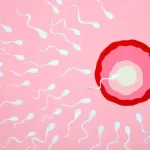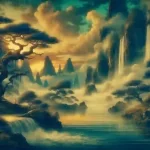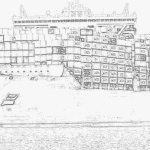I can’t exactly recall when or where I had come across the name of Rabindranath Tagore. Certain faces of people once seen, certain names once heard get imprinted on the mind. The very name casts a spell — Rabindranath ; what fascination the name holds, what resonance, what grace! Ever since the name ‘Rabindranath’ entered my mind, it has continued to remain ensconced in the inmost recesses. From my boyhood days when I had first striven to gain access into the essence of the Gitanjali with patches of little or no comprehension, I have pronounced the name thousands of times till this day. I have read his poems, listened to his songs, seen his paintings. At that very time I had appended the name of Santiniketan (not Jora sako), Viswabharati later on, with the name of Rabindranath. Even today, whenever Rabindranath comes to my mind, at the summit of my thoughts flutters Santiniketan.
I had heard about Santiniketan during my school-days itself. As far as I can remember, it was Naren Sharma, the distinguished social worker, freedom fighter and literary enthusiast of Dergaon who had first acquainted me with Santiniketan. He had been a college-student at Kolkata. He had shown me the biographical memoir of Rabindranath and handed me the book to go through. I didn’t understand Bangla properly; in fact that was the first Bangla book that I have read. It was after this experience that I procured a copy of the Gitanjali from the Hazra Book Stall at Jorhat and endeavoured with its contents. I have left the book somewhere long ago, but despite having come across scores of his photographs published in numerous papers and journals during the past five decades, including some of his magnificent self-portraits, his photograph in the Gitanjali hasn’t blotted out of my mind following superimposition. He is reclined upon a mat with a potted bloom to his right and caressed by a few areca-like leaves from both his sides. His left hand rests upon his laps weightlessly; his visage wears a solemn despondence immersed in thoughts, trickling silently along the pulsating folds and creases of his shawl, over the fingers of his left hand, across the leaves to fall at the end drop after drop as globules of dew. Probably it was a photograph of his final years. Recently I came across that photograph in one of Rabindranath’s books again after a long time. There can be a study of this noble personality with the photographs taken during different stages of his life from childhood to old age. It would indeed be an invaluable analysis. Perhaps someone has, by now, already gone ahead with such a project about which I’m not aware of.
While in the ninth or tenth standard, I’d an urge to go to Santiniketan to pursue my studies. Possibly Naren Sharma had provided me with a few hints of the academic atmosphere there. I might have been influenced on this aspect by some other knowledgeable person from Dergaon too. I came to know that at Santiniketan there was no general obsession for the examination system nor the forcible compulsion to qualify in any test. The academic atmosphere and system there was totally unconventional in comparison to the prevalent curriculum in the rest of the country. Fine arts and music were compulsory subjects.
Nothing transpired as envisaged. It was only after long twenty-two years, in the late sixties, that destiny ultimately allowed me to set foot on the soil of this shrine of beauty, crowded by trees and vines, sunshine and shade, designed by Rabindranath’s artistic and philosophical vision. Santiniketan drew people from all parts of the globe — scholars, connoisseurs, enthusiasts, the common folk and slaked the thirst of all. It seemed as if underneath its red dust and soil lay the foot-prints of Rabindranath.
I entered a calm and soothing woodland with an unruffled serenity all around. Even at the end of autumn, nature brimmed with her inexhaustible store of blissful resplendence. The open wilderness, the wide expanse of the horizon and the unsullied sky defined its surroundings.
I reached Santiniketan on a rickshaw from Bolpur station. While heading for Poushali, the rickshaw-puller tried to enlighten me as an experienced guide about the large trees along both sides of the road, the houses, statues, open tracts of land and even the carnivals celebrated at Santiniketan. We passed a group of ambling Chaotali damsels holding each other’s arms in lively gossips. I could perceive the incorporeal presence of Rabindranath everywhere. This was Santiniketan….
Tar akash-bhora kole moder hriday dole
Mora bare bare dekhi tare nityay nutan
Moder toru muler mela, moder khola mather khela,
Moder neel gaganer sohag makha sakal sandhya bela
After going through a write-up by Mahendra Bora in the Asom Bani, edited by Satish Chandra Kakati, about Japanese poetry and a few Japanese haikus translated by Navakanta Barooah in a certain issue of the ‘Cottonian’ during the fifties. I was drawn towards Japanese poetry. That article was later included by Mahendra Bora in his ‘Phul tora gaan’. The above publication had been a sort of a hand-book for me for some time. Through this book I became aware of a benumbed variegated world of poetry. In the fifties itself the famed American poet, Kenneth Rexrath’s translation, ‘One hundred poems from the Japanese (New Direction, 1955)’ was published. At that time I was a regular reader of Buddhadev Basu’s poems. Buddhadev Basu had tagged a brief introduction of Rexrath’s rendering with his poems (Poush, second issue,1362, twentieth year). There was mention of the availability of the book at the Rupa Company of Kolkata. I had procured the book from Rupa by VPP; I was overwhelmed by a sort of euphoria as I went through the pages again and again. Even at that time I could perceive the incredible dimension of the poems. Though I developed an intense urge to translate some of the poems, I held myself back and waited for almost ten long years. Meanwhile, I was on a constant search for more Japanese poems and books related to literature and culture and devoured everything that I could lay my hands upon. I also had the Penguin Book of Japanese Verse (1964) in my hands collected from Rupa.
One day I attempted to render about three of those poems into Assamese purely out of fun and held them before Navakanta Barooah. He said, “You love the Indramalati flower, you’re a sensitive person. Keep on trying, don’t lose patience.” My confidence mounted a little. Whenever my mind remained placid, some sort of an effervescence bubbled inside my mind, I tried my hand with the outlines of one or a couple. In this way I went on endeavouring to gain a little ground for a worthwhile rendering of Japanese poetry. ‘Japanese poetry is untranslatable’ — the above statement by Noguchi, at times, rang in my mind and made me tentative. Mine seemed to be a futile yearning for the impossible. This frigidity loosened its grip on my mind within a few days and, forgetting everything, I sat down again with renewed aspirations.
Having completed quite a number of poems in this manner, I sought to go through the efforts of other translators, the interpretation of one poem by different translators and a few books on Japanese society and culture. To fulfil my objectives I decided to go to Santiniketan. I had heard about an independent department on Japanese language and literature at Viswabharati and I hoped to be enriched to a great extent by its library. With it would materialise a long-harboured dream of mine to visit Santiniketan.
I alighted at Poushali. The owner let me occupy one of the rooms at the front of the house. The place was quiet and unfrequented. After supper I was prepared for bed rather early, but slumber wouldn’t descend upon me. As the night deepened, the solitariness, too, mounted gradually. As I tossed and turned about on the bed with the weariness of the day’s journey, the prickles of sleeplessness and the unbearable solitude, unknowingly I dozed off. Amidst my light slumber, a sharp heart-piercing shriek, never heard before, fell in my ears. I had a sensation as if a part of my body got chilled while the remaining portion was steaming. Sleep was not to descend upon me any more. In this way I slowly advanced towards the flickering glow of day-break. I heard someone croon outside, “Open, open the door. Don’t keep me waiting outside……”
I stepped out of the threshold with an endi shawl wrapped round my body. A cool breeze was blowing. As I strolled along, a dry ripened leaf dropped upon my head as a strip of confetti, while another dropped at my foot. For some reason a chill ran down my spine. Why had I come to Santiniketan at a time when leaves ripened and fell, when the stags and does in Japanese poetry screamed. Who can stop the fall of ripened leaves ! On the other hand, this was the season when the Chandramallika flowers bloomed with gay abandon. Even at this time of fallen leaves, with what sprightliness the spirit of nature pulsated ! The hidden ecstasy sounded as a silent lute. Every year, the twenty-second day of Sravana is observed as the Tree-plantation Day here at Santiniketan. On this very day Rabindranath had taken his last breath on earth.
On being asked about the shriek at night, the house-owner informed that it was that of an egret that had been brought to Santiniketan during Gurudev’s time. “You can have a look, there are still two of them.”
Two or three days had passed at Poushali when one evening the senior land-lord came to my room and said, “You’ve come from Assam. My daughter-in-law hails from Tezpur in Assam.” I asked him to sit on the bed. He began to narrate before me how Abanindranath had sent him from Kolkata to render his service as a fine-arts teacher at Santiniketan, the number of scholars and enlightened personages he had come across during his long eventful term here. He grew emotional while talking about the incredible creative personality of Rabindranath, the reminiscences of his association with the great man, the ‘supernatural’ physical charm and grace augmenting the aura of Gurudev. Santiniketan was frequented by a number of awe-inspiring elegant personalities among whom Noguchi was the most handsome and attractive. Yet Rabindranath remained unsurpassed. Once while on his morning stroll, Rabindranath had stepped into his place seeking muri laddus. There used to be a regular stock of this common food-item in the house but most unfortunately and embarassingly, that day there wasn’t any. The man’s voice quivered with regret while mentioning about this incident. The name of this wonderful person of Santiniketan, owner of Poushali, was Santosh Mitra. He rose very early in the morning and crooned the songs of Rabindranath every day during his household chores in the frontyard or backyard.
At Santiniketan, I was at the central library of Viswabharati right away. The librarian was Bimal Mitra. I showed him my identity-card signed by the Principal of our college, Giridhar Sharma and apprised him of my purpose of visit. He seemed to be happy with my interests. He immediately made all arrangements for me to go through any book that I needed. He also permitted me to see the books at the library’s interior. I was extremely pleased to get acquainted with a serious, dignified and cultured person. Then I asked him about Prof..Kajuo Azuma from the Department of Japanese Language and Literature. After a little while he took me to Prof. Azuma and introduced me with the scholar. Azuma was in his room in the department seated upon a mat reading something. The moment we were at his door, he stood up. He ushered me into his room and asked me to sit on the mat. He knelt upon the mat facing me. He was speechless as he studied my face intently for some moments. He asked me a number of questions — I had gone from Assam, translated Japanese poems, knew a little bit of Japanese, had I heard the sound of crickets and cicadas, did I have banana and plum trees in my garden, did I love birds, insects, butterflies and centipedes, had I ever passed a sleepless night in autumn or spring, did I drink tea and so on.
After remaining silent for a little while, Prof. Azuma assured me of his assistance in every possible way. If I needed to ask him anything, I could come to his department at any time. “By the way,” he asked, “has there been any translation of Japanese literature to your Assamese language till date?” I told him about Navakanta Barooah. I wasn’t aware then of Atul Hazarika’s translation of Ganjikonwar’s stories. When I sought to take leave for the day, Prof. Azuma said that he had been at Santiniketan for quite some time, but no one had ever approached him to discuss Japanese poetry. Occasionally, someone came to him only to talk about Japanese transistors.
I had taken along with me about 150 translations of Japanese poems and a few questions on Japanese poems as well as Japanese society and culture. I read out to him my translation attempts. I still cherish those unforgettable moments when Prof. Azuma patiently and sympathetically listened to each translation of mine and carefully compared them with the originals passing long wearisome hours. His love for poetry was rare and distinctive. He also helped me in the Assamese transliteration of the names of Japanese poets, places, hills etc. With so little an effort it would not have been easy for me to know about certain common but significant aspects of Japanese social and cultural life had I not come into contact with Azuma. Once he asked me about the philosophy of Zen Buddhism. “Have you heard about Suzuki? Go through his books — you’ll find them in the library of the Department of Philosophy.” He had quoted a Zen philosopher and said — that’s Zen. The quotation was short and simple but I couldn’t understand anything. I couldn’t even recollect the words while writing a note on Zen Buddism for my collection of translated Japanese poems. Perhaps he had defined Zen with a line of this sort : When hungry eat, when tired sleep.
Azuma was short, simple-minded, sensitive, soft-spoken and exercised restraint. He moved about at Santiniketan on a bicycle. He visited me at my room at Pouchali twice during evening hours. I never saw him laugh or grimace; of course, there hadn’t been an occasion too. He was a major Japanese translator and well-versed in the literature of Rabindranath.
After the publication of my collection of translated Japanese poems, I sent him two copies of the book at his address in Japan. He acknowledged receipt of the books with a letter
…….. Now I can understand Assamese to some extent, but even now I cannot write Assamese at all, therefore I have to write in English. Please pardon me. This translation of Japanese poems, I think, is the first one that has ever been done in modern Indian language so elaborately and completely.
…….. I brought a few books of Assamese language and literature. You are a genuine setu between India and Japan.
…….. We are eager to go to Assam and to know Assamese literature and folklore.
I shall try to continue to learn Assamese and read literature in original language.
With my love and best regards.
Sincerely yours. 17.2.73
During the first few days I touched and probed and flipped through the pages of a few books at the central library of Viswabharati. Many books have the signature of Rabindranath and quite a lot of the collection are gifts received by him in the country and abroad. While taking down notes from the books at the library, if boredom or weariness got over me at any moment, I moved towards the mural on the library wall by Nandalal done in the Jaipuri style and got reinvigorated.
During my stay at Santiniketan, I regularly visited the library and the Department of Japanese Language and Literature in the early hours. Or in the afternoon I visited Rabindranath’s residence and had a regular look at Rabindranath’s paintings, Nandalal and Binodebihari’s murals and frescos and Ramkinkar’s statues. I couldn’t help gazing repeatedly at Rabindranath’s face, his landscape paintings, images of feminine forms and a few other works of ‘Adbhut rasa’. In them I could perceive the depth of Rabindranath’s excellence. I was overwhelmed with awe and wonder by their novel language of art, the vibrancy of expression and unparalleled beauty. During the last decade of his life he had completed about 2,500 paintings. In midst, I had also visited the studio and library of the Kala Bhavan. Earlier, I had never seen a studio nor such a huge and priceless collection of art-works.
Binodehihari’s fresco at the Hindi Bhavan, ‘The Medieval Saint’, is a timeless work of art. He spent the last three decades of his life without his power of sight, yet he amazingly remained active till the end. The work, designed in the Italian fresco style and completed in two years, is of epical dimension, a memorable artistic attainment reflecting Binodebihari’s philosophy of life. Though it is titled as ‘The Medieval Saint’, it is also a unique commentary on human life during the times of the Mahabharata. When I first cast my eyes on this frame, my mind immediately raced to the panels at Haripura Congress, the outstanding creations of Nandalal. Those, too, are manifestations of the glory of Indian life. Apart from a few of the originals, I have seen seventy-seven copies of these panels.
I talked with Ramkinkar on two occasions, once at his cottage. After his demise, I had focussed on his invaluable contribution to sculpture in an article, ‘Artist Ramkinkar and modern Indian art’ where my interview with him was included. The man, his sculpture and paintings stirred my perception and imagination to such an extent that after sharing my experience with some of my artist-friends, I couldn’t help penning a few lines of poetry on him. In the poem I have used a line from one of his favourite Baul songs —
Is it cosmic motion or manifestation
Who’s this graceful heart
A liberated mind — red rosy azurr dark-green
I chanced upon him one evening
In the role of an ambrosial son
Lighting the lamp on the cup of the stand
He lights golden beads in every eye
Moves on humming —
Sweet sweet are the ripened fruits on trees
Accept life
Break build and move on
Life is free, the world rhythmic
Racing fast towards the wide void
Who’s this blissful soul
The sound of the flute of death.
Numerous artists have drawn and painted in their individualistic styles with their artistic thoughts and feelings inspired by the natural environment of Santiniketan, Chaotal men and women, palm trees while many have carved Chaotal statues — the horizon of Nandalal’s Santiniketan, Binodebihari’s palm trees, Santiniketan’s atmosphere, sky, horizon, soil, lives of people in the Chaotal family of Ramkinkar are apparent in unique art-works of universal appeal. It is worth-mentioning that during Satyajit Ray’s conversation with Binodebihari while making the documentary film, ‘Inner Eye’, Binodebihari had asked Ray, “I suppose you’d show the Khwai in your film ?”
“I’d the wish to, but I think there’s no trace of it now.”
“It’s still there at one place. Taltore. Towards the Prantik station. And also towards the residence of Sipsaheb. Don’t leave out the Khwai. The Khwai with a solitary palm tree. That much. It’s there where you’ll find my spirit, the main aspect of my life. You may say — that’s me.”
The lives and art of Nandalal, Binodebihari and Ramkinkar were deeply and inextricably linked with Santiniketan. The three of them had intimate relations with nature and were close and akin in sensitivity and perception. The man standing beneath the tree in Binodebihari’s “The Tree-Lover” is none other but he himself and the painting seems to be an image of his self.
The noted sculptor, Atul Baruah who was a student at the Kala Bhavan was an old acquaintance of mine. At the Kala Bhavan I got introduced to two other distinguished artists, Jhanakjhankar Narzary and Saleha Ahmed who were also from Assam. I got to see quite a number of statues sculpted by Narzary in the precincts of the Kala Bhavan. Though these statues were the works of a student, I haven’t forgotten them till today. They bore semblance with Giacometti in form.
The Kala Bhavan developed with Nandalal’s philosophy of art, liberal view on humanity, devotion, dedication and principles of education. Behind Nandalal was Rabindranath himself, Rabindranath’s inspiration, perception of art and universal vision. An atmosphere of free thinking and independence prevailed at the Kala Bhavan. That ambience is still existant. Ramkinkar had said in an interview, “Whenever you’ve Gandhiji as your subject, the first prize is guaranteed. If you do something other, you’re pooh-poohed. You can’t let this go on. Artists have always stuck to their routes and moved on. They have never been stranded or impeded.”
I hadn’t been to the Sangeet Bhavan. Nevertheless, I was attracted to it as much as the Kala Bhavan. I had passed by it a number of times. I heard within my mind the vocal rendition by Suchitra Mitra, ‘Ganer surer ashonkhani pati pather dhare; ugo pathik, tumi eshe bosbe bare bare…’ and Dwijen Mukhopadhyay, ‘Tumi keman kore gaan koro he guni, ami abak hoye suni, kebal suni….’ At that time Shantidev Ghosh, Konika Bandopadhyay were at the Sangeet Bhavan. I had seen the students of Santiniketan staging a play with Baul songs by Purno Das. I must call this too a great fortune for me. Whoever has once listened to Baul songs by Purno Das or songs by Abbasuddin can never have them out of their mind.
Santiniketan made me perceive the relationship, the intimacy between the animate and the inanimate world since times immemorial. Here nature and man, houses and dwellings, murals and frescos, everything combined together to create an amazing ambience of confluence. Long before Rabindranath had written — If man’s places of settlement simply get jam-packed, no precept finds any space for entry by any means, then our thoughts and activities gradually get polluted and disabled, and in their own dumps of bottomless depths kill themselves.
Rabindranath resided in a number of houses at Santiniketan. His last place of residence was Odissi. I was fascinated by the architectural novelty of Odissi, Uttarayan, Udayan and, most of all, Shyamali. Among the quarters at Santiniketan, it happened to be my favourite. A house of flawless beauty built with a variety of mud that can withstand fire. During my days at Santiniketan I had visited Shyamali a number of times but never stepped into its interiors. Whenever the thought of entering came to my mind, I had a sensation as if Rabindranath was there standing by the threshold staring into the distance.
While returning, I saw the whole of Santiniketan through the windows accompanying me with my advancement on the train. Santiniketan’s sky, earth, people, the enchanting horizon, the woods full of sal and palm trees, variegated plants and vines, murals, sculptures, Odissi Uttarayan Udayan, cottages and thatches, the library, the studio at the Kala Bhavan, the empty floor of the Japanese Department — the ripened leaves and a dazzling splash of vermilion light.
I had been to Santiniketan again for a night during the winter of 1987 as one of the invitees for the Poetry Festival organized by the Kolkata Kavita Utsav Samity. The poetry reading session in the evening began after the rendition of a Rabindra Sangeet by Santidev Ghosh without the accompaniment of any musical instrument — ‘Tumi kebaloi sobi, sudhu pote likha. Ui je sudur niharika ….’ A solemn quiescence prevailed upon the site of the festival. What an earnestness streamed forth from his vocals, an indescribable Alakananda with no beginning, with no end.
The three of us — the eminent poet Tarun Mitra, Prabhajit Kaur and I passed the night at the Deholi. Here Rabindranath had written a certain portion of his ‘Gora’. The present distinguished artist, Rajkumar Majinder Baruah, Munindra Narayan Bhattacharya and a few other Assamese students met me at the Deholi. The following morning I didn’t fail to visit the spots that had left me unquenched before. Every now and then, the song rendered by Santidev Ghosh the evening before, kept echoing in my mind …..
You’re not here before my eyes, but you’ve seized the very core of my eyes.
English translation : Krishna Dulal Barua
Nilmani Phookan is considered Assam’s most distinguished living poet. Born in the village of Dergaon in 1933, he started writing poetry in the early 1950s. Inspired by the example of his precursors, Hem Barua, Amulya Barua and Maheswar Neog, he and his other contemporaries, Navakanta Barua and Ajit Barua, took to free verse, exploring and extending the possibilities of Assamese modernism. He has written thirteen volumes of poetry, and has won ten regional and national awards, including the Sahitya Akademi Award for Poetry in 1981 and the Padmashri from the Government of India in 1990. He joined the Arya Vidyapeeth College in Guwahati as a lecturer in 1964 and worked there until his retirement in 1992.






Leave a Reply